- Author: Anthony Presto
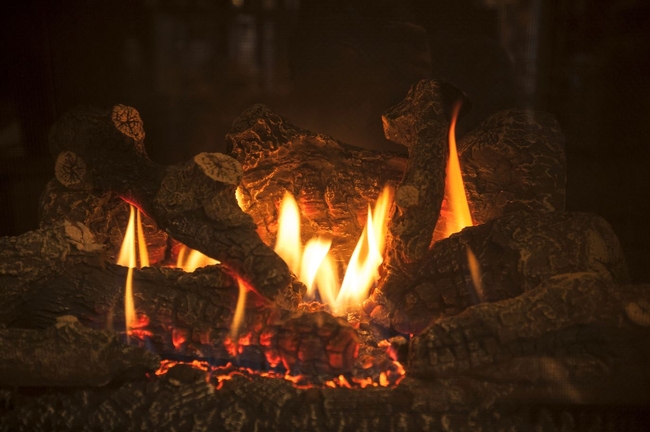
Residential wood burning is the largest single source of particulate matter pollution in the Valley during winter months. For this reason, the District's residential wood smoke reduction program imposes restrictions on the use of fireplaces, wood stoves, fire pits and chimneys. The District recommends using other methods to heat your home unless wood burning is your sole source of heat. For full details on the District's Residential Wood Smoke Reduction Program, visit www.valleyair.org/rule4901.
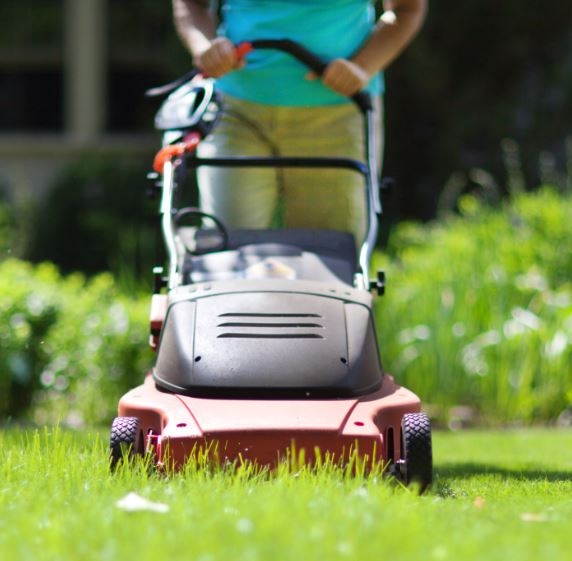
Another source of air pollution are small engines on gas-powered yard care equipment, which have no emission controls. One gas-powered lawn mower can pollute as much as 12 late-model cars.
For every gas-powered lawn or garden tool, there is an electric or manual alternative that works just as well.
The District's Clean Green Yard Machines yard care incentive program provides significant rebates on electric lawn mowers, trimmers, edgers, pole saws and chain saws. For details on these incentives visit www.valleyair.org/cgym.
In addition, the Valley Air District suggests using a rake or broom instead of a blower. Leaf blowers create particulate matter in the form of dust and can be a nuisance to your neighbors.
Anthony Presto is the Outreach & Communications Representative for the San Joaquin Valley Air Pollution Control District
- Author: Ed Perry
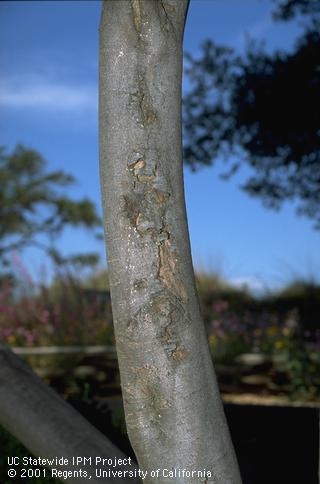
Sunburn is damage to leaves and other plant parts caused by a combination of too much light and heat and insufficient moisture. The first symptom of this problem may be leaves that appear dull or wilted. A yellow or brown “burned” area develops on the leaves, which then dies beginning in areas between the veins.
The best way to avoid sunburn is to choose plants that are adapted to the planting site. Trying to grow shade-loving plants in full sun is asking for sunburn problems. But even sun-loving plants will suffer sunburning of leaves if the plants are growing in dry soil. You need to provide your plants adequate irrigation water to prevent most sunburning problems. If you notice the symptoms early enough, you may be able to restore the color to sunburned leaves before they killed.
Sunscald, also sometimes called sunburn, is damage to tree or shrub bark caused by hot sunshine. Sunscalded bark becomes cracked and sunken, and is susceptible to attack by wood-boring insects and wood-rotting fungi. In fact, I almost always find evidence of flatheaded borer injury in trees that have sunscalded bark. Sunscalded trunks and limbs can develop cankers, become girdled, and die.
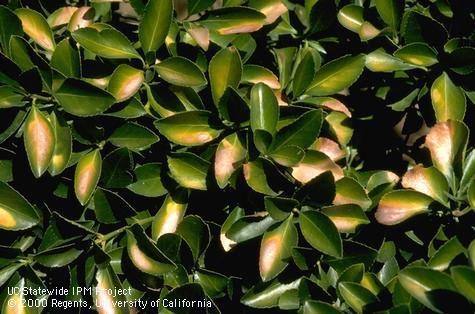
Sunscald often occurs on young woody plants. Their bark is thin and may not tolerate exposure to direct sun because they were grown in nurseries where their trunks were shaded. Older trees can be damaged if you expose branches to the hot sun by pruning heavily, especially during the summer months. Removing taller trees that provided shade, or adding pavement or buildings that reflect light onto plants can also lead to sunscald. Even in well-watered soil, sunscald may injure bark if plant roots are unable to absorb enough moisture when it's hot.
You can prevent sunscald through proper planting and pruning. Prune newly planted landscape trees very little or not at all. Leaves not only shade the bark, but manufacture foods necessary for root growth. If there is no foliage growing along the trunk of a newly planted tree, paint the trunk with white interior latex paint, diluted 50 percent with water. Old bark that has been recently exposed to the sun by pruning or limb breakage can also be painted white. Wood chips and other organic mulches can reduce reflected heat and light, thereby reducing the danger of sunscald.
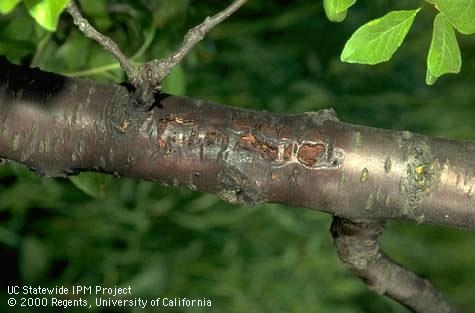
As always, it's important to plant species that are well adapted to the amount of light available in your garden. Also, avoid changing the environment in any way that significantly changes the amount of light your established plants are receiving.
Ed Perry is the emeritus Environmental Horticultural Advisor for University of California Cooperative Extension (UCCE) in Stanislaus County where he worked for over 30 years.

